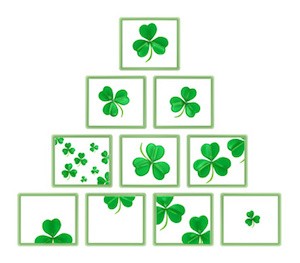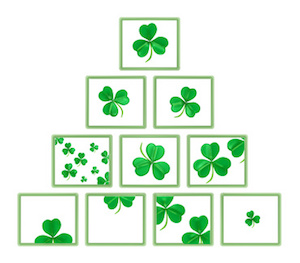 Many genealogists use surnames to dig up their Irish roots. This is an important and sound technique, because surnames can often point to the Irish county from which your ancestors came.
Many genealogists use surnames to dig up their Irish roots. This is an important and sound technique, because surnames can often point to the Irish county from which your ancestors came.
However, surnames aren’t the only type of name you can use to trace your Irish ancestry. Thanks to common traditional naming patterns across the country in the 19th century, first names can also often provide an important clue as to the identities of your elusive family members.
Nineteenth-century Irish family naming patterns usually followed the guidelines in the list below pretty closely:
1. The oldest son was named after the father’s father.
2. The oldest daughter was named after the mother’s mother.
3. The second son was named after the mother’s father.
4. The third son was named after the father.
5. The fourth son was named after the father’s oldest brother.
6. The second daughter was named after the father’s mother.
7. The third daughter was named after the mother.
8. The fourth daughter was named after the mother’s oldest sister.
As you can see, this type of naming pattern can potentially provide important clues to your Irish roots. It’s especially useful in cases where you don’t know the names of the parents of a particular ancestor. By looking at how he named his children, you can have an idea as to what his parents (and siblings) names may have been. While the above guidelines were by no means set in stone, and sometimes varied, the pattern was usual enough in the 19th century to be of real use to genealogists searching for Irish ancestors.
By looking at naming patterns when searching for the parents of an ancestor, you can keep a closer eye out for potential candidates by looking at their first names. Of course, you should always verify and document all information, and never assume to know an ancestor’s name simply by what it would be according to the above list. But, for example, if you’re looking for the parents of an Irish ancestor named Michael Donnahue, and you know Michael’s first-born son was named Martin, then this might be a clue that Michael’s father’s name was also Martin. In this case, you can look more closely at men by the name of Martin Donnahue who lived in the same area as Michael and were of the right age to be Michael’s father.
Knowing the traditional naming patterns helps you find your Irish roots by alerting you to clues of identities you may have otherwise missed. Use it cautiously, but do use it! It can help you tremendously!










Carol - 10 years ago
This doesn’t just apply to the Irish but to most countries. This pattern can be found in our dutch and Italian trees also.